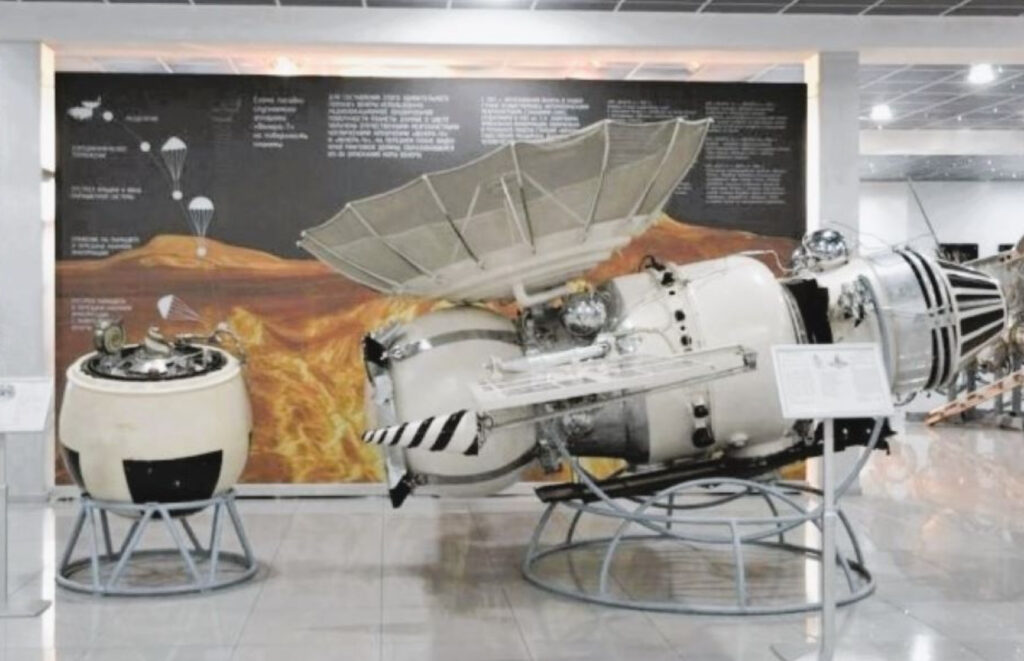In the vast symphony of human exploration, there are grand crescendos—moon landings, Martian rovers, the James Webb Space Telescope—and there are forgotten notes, lost missions that float in silence for decades. One such note, Kosmos 482, is poised to reenter Earth’s atmosphere in spectacular, if unpredictable, fashion. Launched more than half a century ago by the Soviet Union, this half-ton relic from the Cold War era has spent the last 53 years orbiting the planet in mute defiance of its original purpose: a journey to Venus that never came to pass.
Now, in an ironic twist worthy of science fiction, Kosmos 482 is falling back to Earth—its trajectory unknown, its timeline uncertain, and its landing site somewhere between the poles of anxiety and probability. Though it’s likely to incinerate upon reentry or splash harmlessly into a remote ocean, its descent reminds us not only of the dangers of space debris, but of the strange historical detritus that still circles our skies.
This is a story of failure, legacy, and the enduring consequences of ambition.
Kosmos 482: An Orphan of the Venusian Dream
On March 31, 1972, amid a feverish Cold War race to conquer the solar system, the Soviet Union launched Kosmos 482, a probe intended to study Venus. It was part of the Venera program, a bold series of missions aimed at exploring the hottest planet in our solar system—a place of crushing atmospheric pressure, acid clouds, and hellish temperatures.
But something went wrong. Shortly after launch from the Baikonur Cosmodrome, the booster tasked with propelling the probe from Earth orbit to Venus failed. Instead of leaving Earth’s gravitational pull, the spacecraft remained trapped in a low orbit, misclassified under the catch-all “Kosmos” designation used for failed or ambiguous missions.
Its twin probe, Venera 8, launched just days later and completed its mission with stunning success, transmitting data from Venus’s surface for 50 minutes before succumbing to the planet’s hostile conditions. Kosmos 482, however, became a ghost—a remnant of missed opportunity.
Half a century later, that ghost is knocking once again.
Falling from Grace: Why Kosmos 482 Is Crashing Now
Though it may seem odd that an object launched in 1972 is only now reentering the atmosphere, the spacecraft’s long orbital life can be attributed to its unusual mass and design. Kosmos 482 was equipped with a hardened descent module, a durable capsule designed to survive the brutal descent through Venus’s atmosphere. Ironically, that same ruggedness has allowed it to resist atmospheric drag and solar radiation pressure for more than five decades.
Over time, the satellite’s orbit has slowly decayed, and now its final plunge is imminent. Experts predict it will reenter Earth’s atmosphere sometime within the next 24 to 72 hours, though that timeline remains fluid. Equally uncertain is the location of its landing: projections cover a wide swath of the globe, anywhere between 52° north and 52° south latitude—a region that encompasses virtually all populated areas of the planet.
What does this mean for the average person? In probability terms: not much. In symbolic terms: a great deal.
Will It Hit Me? The Statistics of Space Junk Reentry
The visceral image of a Soviet spacecraft crashing through your roof may animate headlines, but the reality is far more mundane. Despite being approximately 500 kilograms (over 1,100 pounds), Kosmos 482 is unlikely to survive reentry in its entirety. The majority of space debris incinerates during the high-speed friction of atmospheric entry, with only the most heat-resistant components—often made of titanium or carbon composites—making it to the surface.
Still, those remnants can and do reach Earth. In 1978, Kosmos 954, another Soviet satellite, famously crashed into Canada, scattering radioactive debris from its onboard nuclear reactor. More recently, China’s Long March 5B booster made headlines with uncontrolled reentries in 2021 and 2022, spurring international outcry over space safety norms.
Yet according to NASA and the European Space Agency, there has never been a documented human fatality due to falling space debris. The chance of being struck by a piece of Kosmos 482 is estimated at less than one in a billion—orders of magnitude less likely than being struck by lightning, winning the lottery, or being bitten by a shark.
In short: you can still enjoy your barbecue.
Kosmos 482 and the Legacy of the Cold War in Orbit
While Kosmos 482’s return might read like a quirky blip on a slow news cycle, it speaks to broader truths about space debris, neglected orbits, and the geopolitical history still circling overhead.
The Soviet Union and the United States launched thousands of missions during the 1960s and 1970s. Many were successful, but many others were not—and they left a trail of hardware in low-Earth orbit (LEO), medium-Earth orbit (MEO), and beyond. These objects, whether they’re dead satellites, spent boosters, or mission fragments, now form a growing cloud of debris that poses risks to active spacecraft and astronauts alike.
Kosmos 482 is one of many. It just happens to be one that’s coming home.
In that sense, its descent is less an isolated event than a reminder: space has a memory. It does not forget the things we leave behind.
The Ethics and Urgency of Space Debris Management
As global space activity accelerates—with new missions from the U.S., China, India, private companies like SpaceX, and dozens of smaller nations—the issue of orbital debris has become increasingly urgent. Today, the U.S. Space Surveillance Network tracks over 27,000 pieces of space debris, some as small as a softball, many traveling at speeds exceeding 17,000 mph.
Even tiny fragments can cause catastrophic damage. In 2009, an active Iridium communications satellite collided with a defunct Russian satellite, creating thousands of new debris fragments in an instant.
In response, space agencies have implemented stricter guidelines for “end-of-life disposal”, including protocols for controlled deorbiting, relocation to “graveyard” orbits, or disintegration planning. But older spacecraft like Kosmos 482 predate these standards—they are the ticking clocks of the pre-regulation era.
Which raises a moral question: What responsibility do we have for the debris of past ambitions? And more critically: What happens when the sky gets too crowded to ignore?
Cultural Memory: From Monument to Specter
It’s easy to romanticize space exploration. The sleek lines of rockets, the heroics of astronauts, the poetry of the infinite. But the truth is that much of space’s legacy is neither clean nor noble. It is cluttered, contested, and materially unresolved.
Kosmos 482, in its strange second life, becomes a symbol of technological hubris. A monument launched toward Venus, now circling the Earth in failure and finally crashing down—not in flames of triumph, but in ambiguous descent. Its fall serves as a metaphor for the unintended consequences of progress, the afterlife of bold ideas unmoored from practical stewardship.
And yet, there’s something poignant in its return. After half a century, it reenters the atmosphere not as a machine of conquest, but as a falling star of lost potential.
When the Sky Falls, Will We Notice?
In a world saturated with breaking news and digital stimuli, one wonders: if Kosmos 482 crashes in the Pacific and no one sees it, does it make a sound?
The answer, in pragmatic terms, is no. But in cultural and ecological terms, its fall echoes.
It challenges us to rethink our relationship with the upper atmosphere—not as a void, but as a space we inhabit, affect, and must care for. It forces us to consider space not only as a frontier, but as a domain of responsibility.
As humanity prepares for new eras of lunar bases, Mars missions, and space tourism, we are no longer innocent. The reentry of Kosmos 482 is not a danger. It is a message.
One last transmission from a spacecraft that never spoke.
No comments yet.








